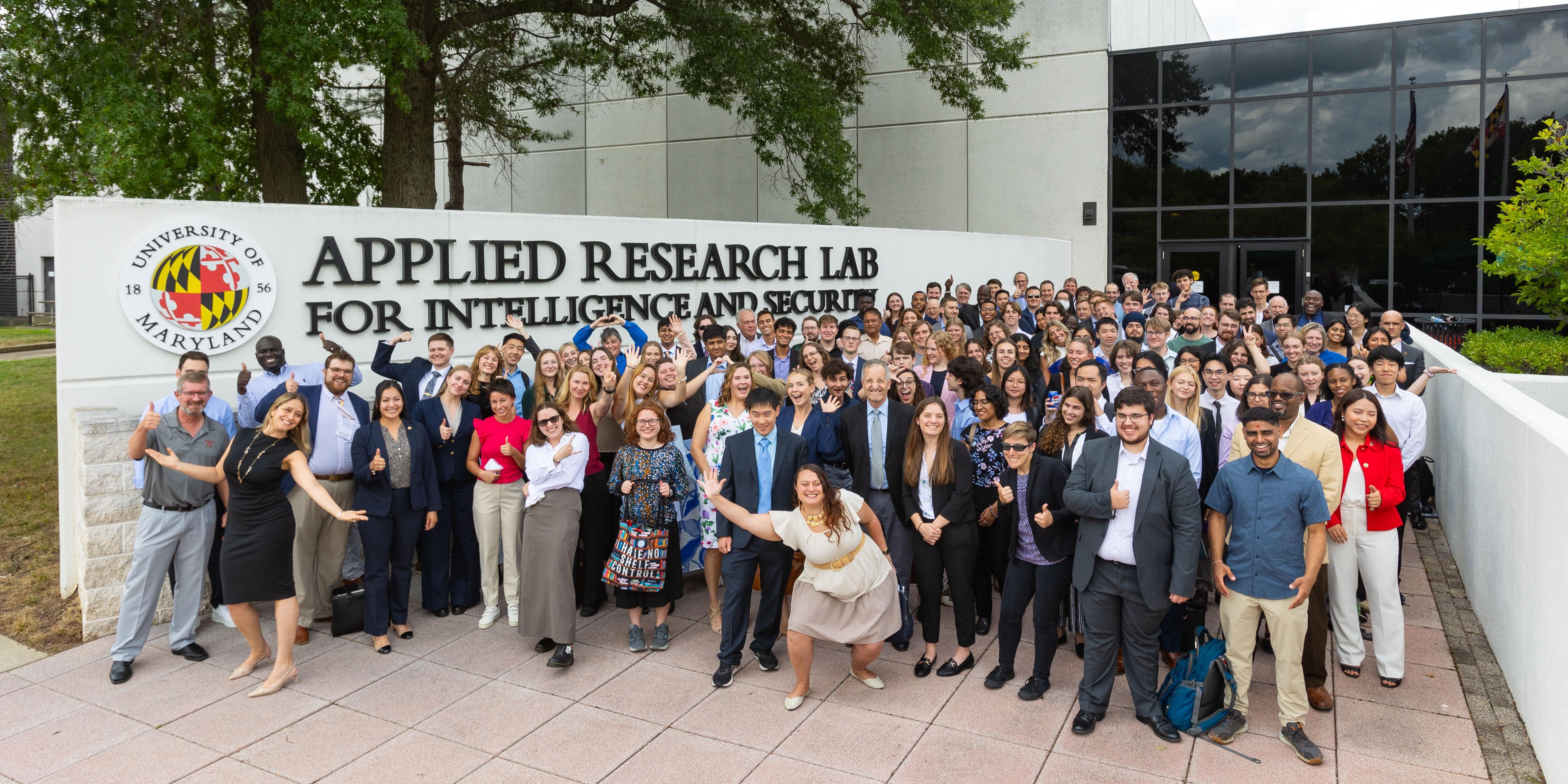
ARLIS's 2024 Research for Intelligence and Security Challenges (RISC) summer internship program ended Aug. 9 after interns spent 10 weeks working on a variety of real-world issues across 46 projects.
Over a two-day capstone event on Aug. 7 and 8, ARLIS hosted all 110 interns and 54 faculty mentors. The interns displayed their efforts at a Research Showcase with more than 200 attendees, including U.S. Government sponsors and recruiters.


The projects, sponsored by several intelligence and security agencies, focused on topics technology and industrial security; artificial intelligence, data and computing; and human and social systems. Below are brief summaries of six of this year’s 46 projects that RISC interns supported.
Project Title | Abstract |
Team Arkansas: Cloud-Based Portal for Quantum Compute Systems | Quantum computing is a new and evolving technology. To make the most of it, decision-makers need clear, up-to-date information on how these computers are performing and how well they handle different tasks. Team Arkansas was tasked with understanding how different quantum computers perform when people use them through cloud services like Azure and AWS. To do this, they created a web dashboard that shows how well these quantum computers work in real-time. Using a programming tool called Qiskit and specific standards to measure the performance of quantum computers, Team Arkansas created charts and views on their dashboard, so users can easily see the performance data. Instead of checking each provider's site separately, users can view all the relevant information in one place. Separately, users can see all the relevant information in one place. |
Team Colorado: Retrieval-Augmented Generation (RAG) Pipeline Capabilities for Better Data Exploitation | In recent years, Large Language Models (LLMs) have advanced significantly, particularly with the introduction of the Retrieval-Augmented Generation (RAG) pipeline. This tool enhances LLMs by integrating real-time data access, improving data privacy, and reducing instances of incorrect or misleading information (known as hallucinations). RAG combines both structured data (like databases) and unstructured data (like free-form text) to provide more accurate and relevant responses. The RAG pipeline operates through several stages. Initially, it involves offline data ingestion, where information is gathered and organized. When a query is made, the system retrieves pertinent data and generates a response based on that information. This can involve querying relational databases or semantic indexes to find the most relevant details. Team Colorado was tasked with developing a fully private, local RAG pipeline that users can implement themselves. This pipeline included an automated evaluation system to test its performance rigorously across different LLMs, embedding models, and fine-tuning methods. The goal was to create a RAG pipeline that effectively handles various types of textual data and multiple languages, demonstrating how RAG can enhance the accuracy, reliability, and security of LLMs. |
Team Kentucky: Doctrinal Language Detection | When countries communicate with international audiences, they sometimes use specific key terms to show how much they are willing to escalate a situation. These terms might come from military or diplomatic language or refer to military equipment or infrastructure. By understanding these terms and their connection to a country's policies, the U.S. government can better analyze political situations and predict the possible outcomes of other countries' actions. Team Kentucky created a methodology and algorithmic toolkit to aid analysts and provide a deeper understanding of the terms of Russian doctrinal language used in communications. |
Team Missouri: Modeling and Mapping the Will to Fight of Foreign Militaries | Team Missouri worked on developing an innovative model to assess foreign militaries' "Will to Fight" (WtF), an important but hard-to-measure factor in military effectiveness. Interns worked with the Department of Defense and other government agencies to improve this new model, which aims to capture the complex mix of psychological, social, cultural, and organizational factors that affect a military's determination to engage in combat. The project involved studying historical conflicts, current military strategies, and applying theories from various fields to understand and measure WtF. Interns combined qualitative and quantitative data from diverse sources to build this model. Their goal was to create a detailed framework that can be used in real-world simulations and decision-making processes, helping the government predict and understand potential adversaries' combat behavior. |
Team Tennessee: Industrial Security Risk Calculus | Team Tennessee was tasked with creating a system to assess the risk of working with different companies, to help stakeholders—government agencies, company managers, and security experts—understand the risk level of companies that handle sensitive information. The Defense Counterintelligence and Security Agency (DCSA) needs to check these companies before they get special clearances to access classified information. They also need to review them regularly based on new laws and policies. To make this process better, DCSA is developing a tool to manage these checks and provide a clear picture of each company's risk level. The team reviewed existing data to build this tool and find any missing information that could help in assessing risks more accurately. The tool will show risk levels in a way that's easy to understand, with both simple visuals and detailed information for deeper analysis. |
Team Texas: Identifying and Classifying Supply Chain Vulnerabilities | Supply chains can face various disruptions, whether they come from within a company, from outside sources, or even from deliberate actions. While many disruptions are unintentional, they can still reveal potential weaknesses that might be exploited on purpose. Team Texas focused on improving how we manage supply chain risks. They worked on creating a framework and a knowledge base to better understand and organize these vulnerabilities. |
The program started in 2020 with only 17 interns but has grown quickly in size and recognition from government stakeholders across the community. RISC aims to expose and encourage students to pursue careers in the defense intelligence and security enterprise while also providing a sandbox to explore new applied research ideas to support that enterprise. Read more about the RISC program here.
